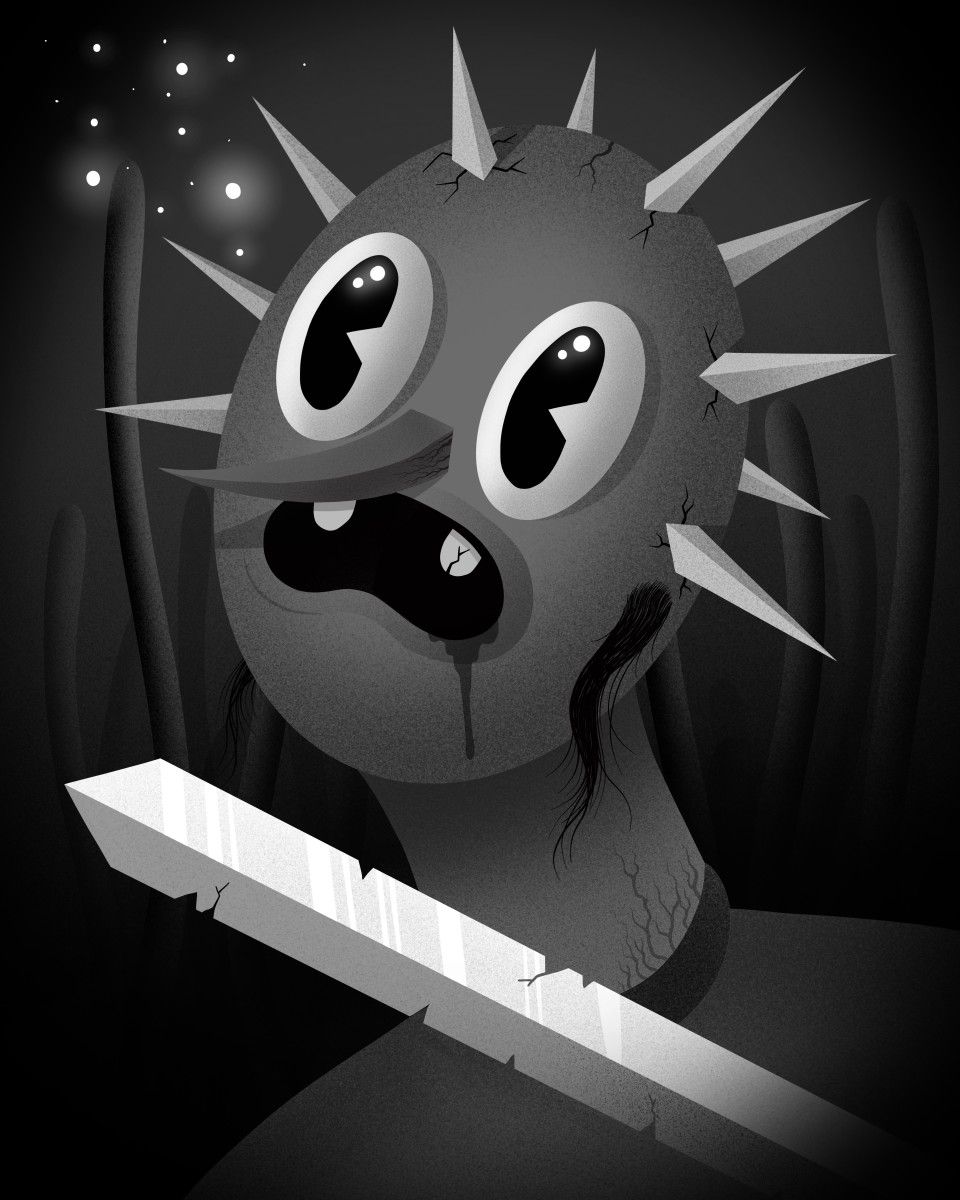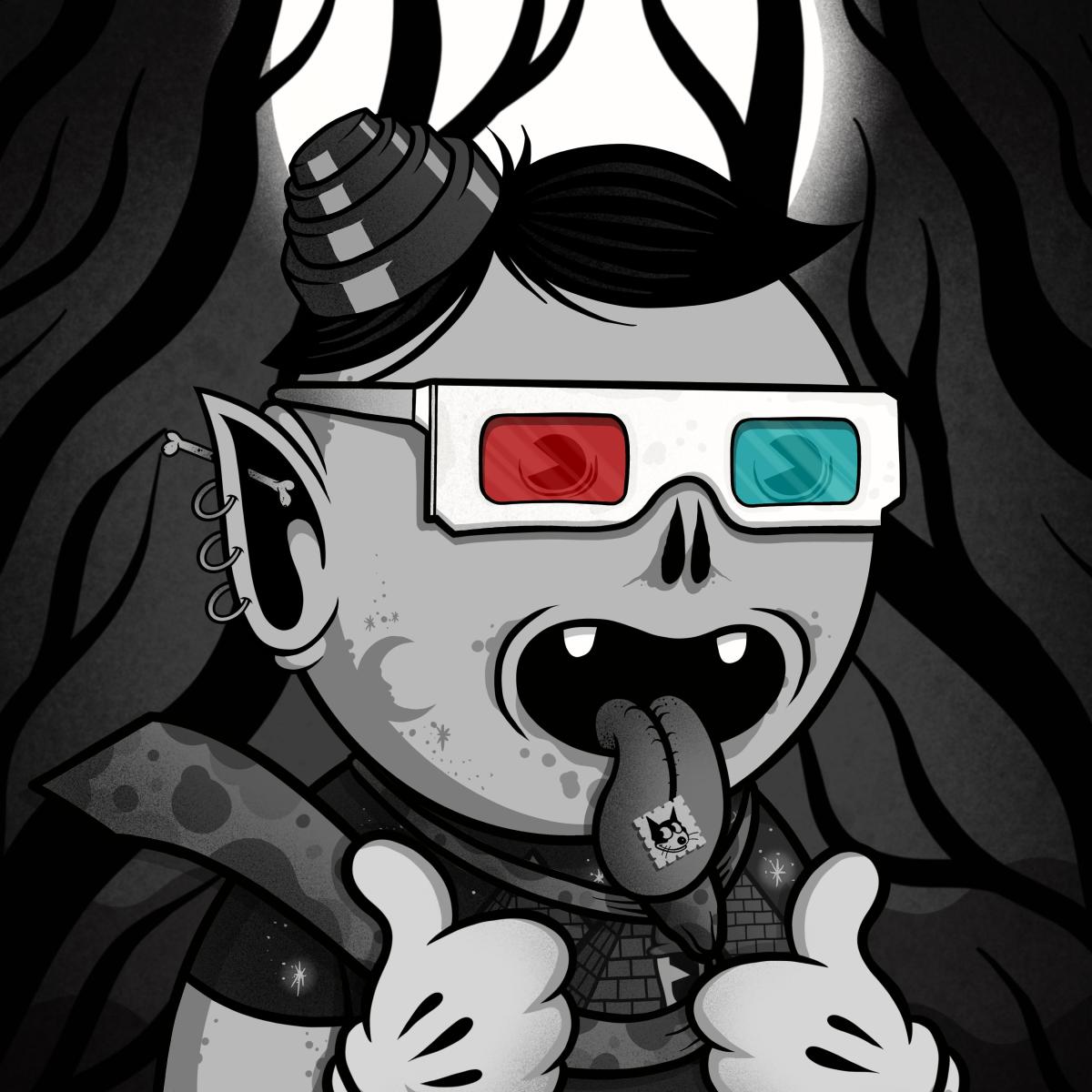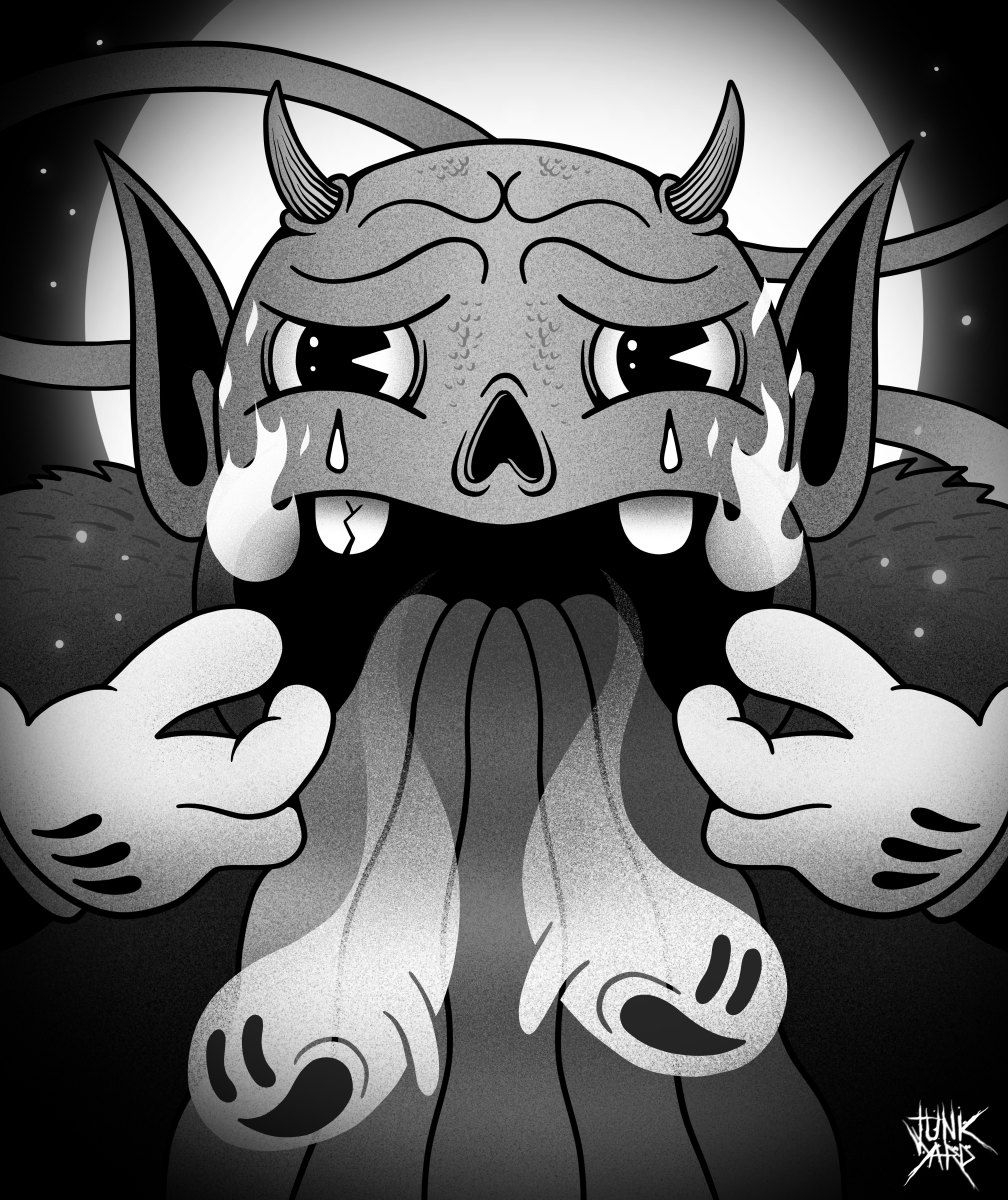“Rubber hose cartoons?” I asked HAiL, my ChatGPT buddy. I could almost hear him groan. And I’m pretty sure his glowing, cyclopean face flashed annoyance for a second. But in typical HAiL fashion, he chirped out a response before I could say anything:
“‘Rubber hose cartoon’ is a term used to describe a style of animation that was popular in the 1920s and 1930s. The term comes from the flexible, rubber hose-like limbs of the characters, which were easy to animate and gave the characters a playful, exaggerated movement. See Mickey Mouse, Betty Boop, and Popeye the Sailor.” - HAiL
Chill, I’m Already Dead by Junkyard.
HAiL is no dummy but a better answer for me would have been, “See Junkyard.” While the rubber hose style fell out of favor by the 1940s, it is experiencing a resurgence in recent years, thanks in part to Junkyard’s artwork. And the themes on display in Junkyard’s art are perfect for The Inevitable.

Forbidden Adventure (Limited Edition) by Junkyard.
Junkyard's artwork features demons, undead, drugs, knives and other taboo subjects that some might find unsettling. But that's precisely what makes his work so great. Junkyard is not afraid to get dark, and he understands that his art may make his audience feel uneasy or uncomfortable. His artwork also features smiling characters, which might mask that discomfort – kind of like that creepy uncle at Thanksgiving dinner. But seriously, Junkyard’s artwork is like a Tim Burton movie on steroids. It’s dark, edgy, and will make you think twice before walking down a dark alley.
“The recurring motif represents an anxiety-inducing exploration of controversial subjects, with the smiling characters possibly masking a sense of unease or discomfort … and it makes for a nice juxtaposition between the cartoon characters and darker subject matter.” - Junkyard

The Birth by Mark Ryden.
In many ways, Junkyard’s style reminds me of early work from Mark Ryden, the purported “godfather of pop surrealism” or lowbrow art, who’s known for his surreal paintings that blend different forms of street and popular culture. Seemingly innocent looking characters are portrayed in surreal and twisted scenes, challenging the audience to confront juxtaposing ideas and emotions.
Despite the dark subject matters, Junkyard’s work is often infused with humor. His artwork reminds us that even in the darkest of times, there is a light at the end of the tunnel, or maybe it’s just a demon holding a bouquet of morning glories.

Kreepy Klub #1883 by Junkyard.
Junkyard was a professional artist for years before joining the NFT community. But don't let that scare you off. Junkyard is still a down-to-earth artist who loves to engage with his fans on Twitter and Instagram, cracking jokes and dropping some memes along the way. He has been active in NFTs for over two years now, and has sold hundreds of NFTs to collectors around the world. If you’ve been around art NFTs at all the last year, you have probably seen some of his work from the Kreepy Club, an NFT project where Junkyard is one of three artists, alongside Kreepture and Tomorrow Man.
To sum it all up, Junkyard is a badass dude who’s not afraid to explore the darker side of art. If you're looking for an artist who's not afraid to push the boundaries, then Junkyard is your man. But be warned, his work might give you nightmares, or inspire you to get that tattoo you’re missing.

The ArtDrop: This used to be my playground.
Whose playground you might ask? Is the Lord of Darkness not enjoying Hell? Whatever the case may be, Junkyard’s ArtDrop for The Inevitable, "This used to be my playground," got me thinking about ghosts. They must burn, too.
In typical Junkyard style, we’re confronted with conflicting images. One smiling and one anxious ghost both belch forth from a demon’s mouth, which is alight with fire. The demon’s horns and snaking tail in the background conjure up classic drawings of Satan. Are the ghosts taking this opportunity to escape the underworld to visit us? Or maybe the Lord of Darkness simply ate too many ghost peppers?
For me, this ArtDrop is on all fours with our themes of Life, Death and the After. The apparent anxiety on the demon’s face makes me wonder whether Death brings us a release or just more of the same. The escaping ghosts’ divergent feelings evoke thoughts of reincarnation and what lies After. Perhaps they’re wondering if they’ll get this whole Life thing right this time around.


